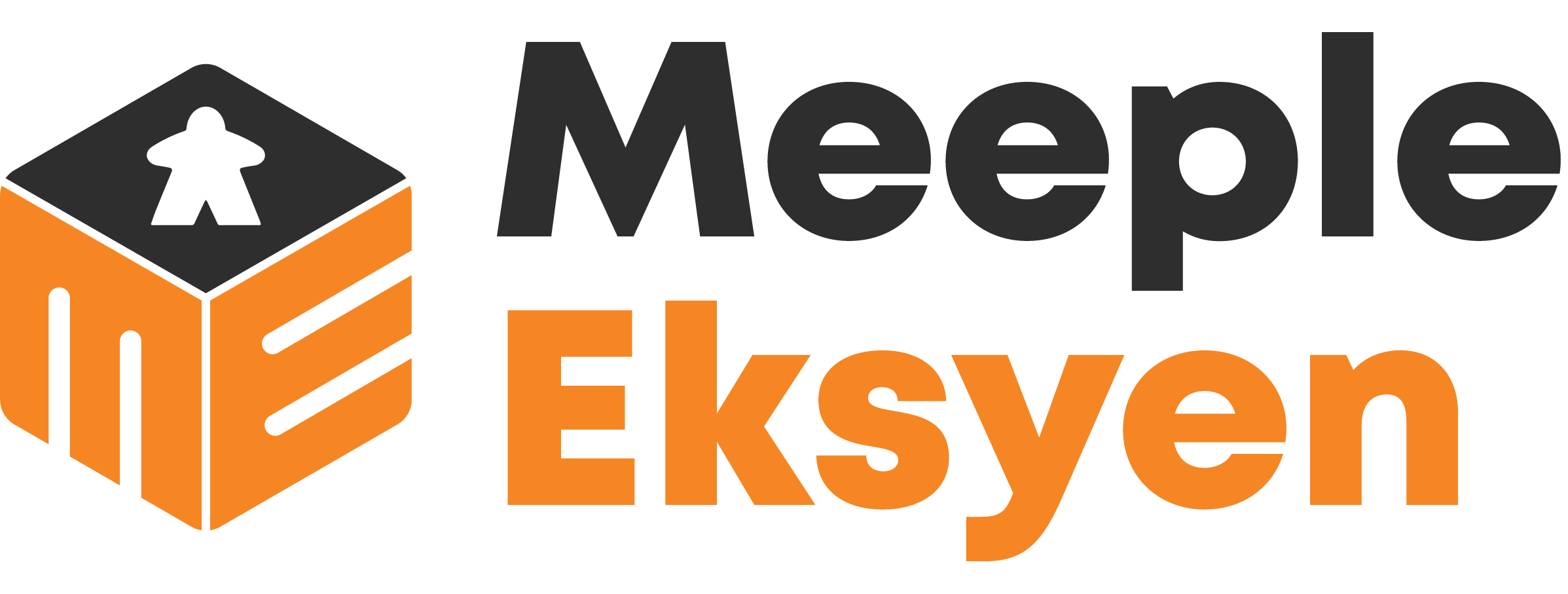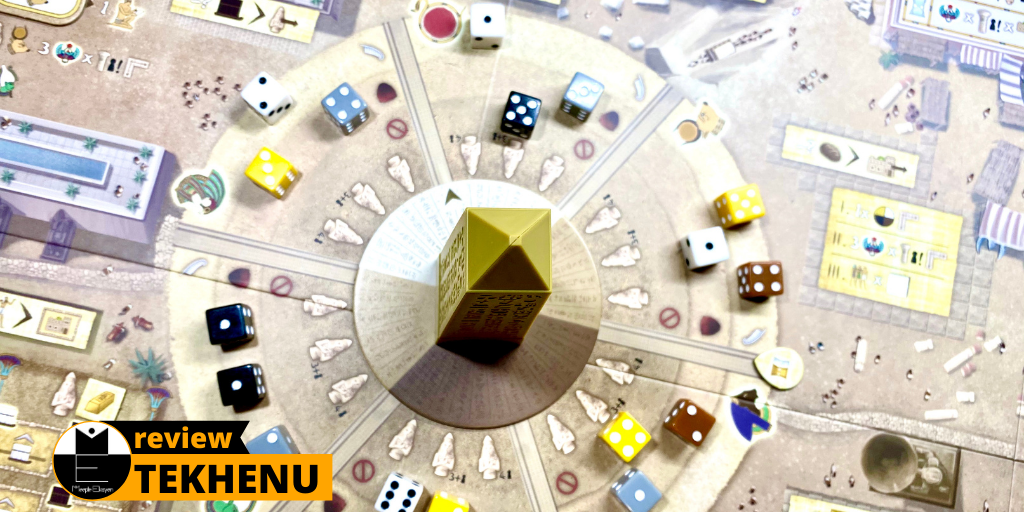I was able to submit my pre-order of Tekhenu from Spiele-Offensive Germany in June 2020. It was possible to get the English one from Board & Dice directly, too. Taking you to ancient Egypt, this game is pretty dice-centric. Just like other Daniele Tascini’s games, Tekhenu will be another complex game I am interested in.
Daniele Tascini and Dávid Turczi were the dynamic duos behind this piece. Tekhenu brings you back to the ancient Karnak. Players joined the Pharaohs in the ambitious expansion to honour the gods. Whatever action they decided to take, they would always face the judgement of Maat. I hope this article helps you decide whether this one is for you or not.
For this game, due to its complex nature, I could not write the rule overview as usual. Half-knowledge is a bit dangerous, you know. I tried to shorten it up, but it just did not work. Thus, you can always watch the video on YouTube for the rule explanation. I like the one from Jon Gets Games and embed it below.
My opinion on Tekhenu’s appearance & components
The obelisk exhibits a strong table presence along with the board, albeit even only the wheel would suffice. Yes, this pillar serves no functionality apart from mere cosmetic. Some gamers in my group believed that the illustration was a bit too crowded, so there may be some of you who share the same opinion. Nevertheless, one cannot dismiss the fact that Tekhenu definitely has decent artworks ingrained in it.
Dice are the main components in this game, and I am pretty sure they were decent and gave a good feeling in my hand. They may not be the fancy, perfectly balance one, but you can properly play with them already. Each of them felt nice in my hands.
Theme
It’s a bit hard to comment on this. I am not a fan of Egypt mythology, so I don’t have much knowledge in this part. One of our gamers said that the gods’ actions depict what they did in the Egyptian’s lore.

Gameplay and experience
Tekhenu demands players to gather the most points in 16 rounds. Sixteen sounds many, don’t you think? Well, actually, no, it’s not. It feels so short and tight in this game. How long you play this game really depends on the number of players. With that in mind, I would say each player takes approximately 30-35 minutes in each session. You can simply time that number with the player count if you want to predict how long will it take your group to finish Tekhenu.
Just like the conventional euro game, Tekhenu uses iconography to explain what does what. The game is language independent, you just have to understand what the icons on the board and cards convey. My copy is in German from Spieleschmeide, and my non-German friends can still enjoy it hassle-free.

Although Tekhenu can accommodate 1-4 players, I didn’t feel right playing duel. The competitiveness was missing, and it was not as fun and enjoyable as with more player count. Tekhenu really shines when four players take parts in the game. It becomes a cut-throat match where every turn matters.
Many things to consider on the board
I would say, the crowded board in Tekhenu is not for aesthetic purpose only. There are really many things going on, and players really have to be careful to pick which die during the turn. Nonetheless, that does not mean the choices are unlimited. The position of obelisks together with the way players have to maintain balance during Maat phase pretty much restrict your option. The concept of pure, tainted, and forbidden dice also supports this fact even further.

Tekhenu is a board game with a steep learning curve. The game is far from the definition of easy because there are many ways to win it. With so many things going on, you continually have to assess the situation and opt for the action that brings the best outcome.
Maintaining balance
Tekhenu’s main concept leads you to keep everything in balance. The sum of the tainted and pure dice’s pips you collect in four rounds need to be as close as zero in the Maat phase. Other players thought that it matters not much because it only affects the turn order. I’d say with the limited 16 rounds and the nature of dice drafting, turn order is an essential part we always need to keep in check. Hence, it would bring you a peace of mind to have Faith token available on your side.
Besides, the balance maintenance at zero forces players to keep on track which dice value they take, be it pure or tainted. They also have to make sure that the resource generated does not exceed their capacity. If you bite more than you can chew, there will be consequences. This aspect makes your decision-making process a tad more interesting.

The balance is also valid in the scoring. In Tekhenu, it is tempting to build as many Buildings around the Temple Complex (through Hathor). Well, it contributes victory points and resources, of course. But, one cannot forget that more Buildings mean more Bread to pay during scoring. If you cannot pay, you will lose more than you gain. Once again, balancing your number is the basic concept to win Tekhenu.
Replay value
Honestly speaking, Tekhenu has a high replay value. With so many things on the board to consider, many ways to win the game, and the short 16 rounds to compete in a complex, strategy game, I think it offers a different and unique experience from each session. However, considering that it demands constant analysis, I am unsure that Tekhenu will be on your table soon after your first gameplay. It will occasionally be there with proper and suitable players (probably not casual ones).

Verdict
You will find a finely polished game in Tekhenu, especially if you are looking for a typical euro game. It is neither light nor a medium game. I would say this Egyptian wonder belongs to the high-complexity category. The game is a solid one, packed with strategy moves to explore in each session. The replay value is there, but I am unsure if Tekhenu will still be coming to your table afterwards due to its complex nature.
I am a full-time food technologist during weekdays. However, when the calendar hits weekends, I transform into an avid board gamer. I am a hardcore Legend of the Five Rings (L5R) LCG player from Fantasy Flight Games (FFG). Current hobby: buying board games. My shelf of shame’s list is getting longer, thanks to you, Kickstarter.





